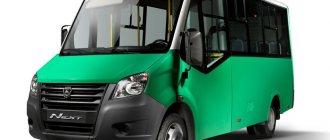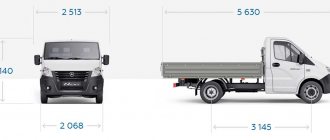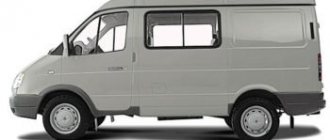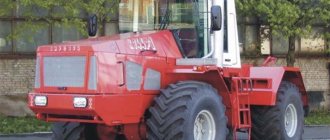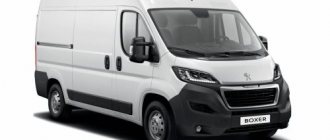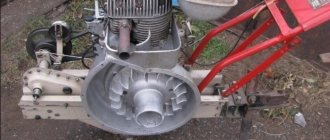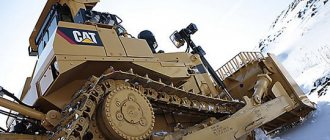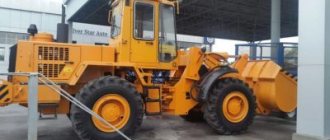Testing the all-metal van Gazelle Next in Sochi
Candidate Master of Sports is a candidate for master of sports. And TsMF, an all-metal van, is the GAZ designation for the long-awaited version of the Gazelle Next! We found out in Olympic Sochi whether the new “all-metal” will be able to fulfill the standards of a candidate for bestsellers.
Regular readers will probably remember that in AR No. 15-16, 2015 there was already a note called “All Metal”: then we published the first pictures of the Next Gazelle with an all-metal body. The official display of the model took place last September at the Comtrans exhibition - and then both we and potential buyers began to wait for it to go into production.
After the publication of a report on long-term editorial tests of Lawn Next, they wrote to us: “Great, of course, but when will there be a detailed story about the all-metal Next?” By the way, when we gave the Lawn to the dealer, we already saw such a Gazelle in the car showroom! But they didn’t let me drive it, and besides, the car was pre-production: the rear doors didn’t close well, and a regular gear lever stuck out in the cabin instead of the promised joystick.
On the front panel there is a new radio with a touch screen and a gearbox joystick
Last winter, Fedor, while servicing Barguzin, stopped by another gas dealer. And there stood the Next van - with normally closing doors, but also with a “poker” on the floor. In the same issue of the column, I talked about a brief acquaintance with ambulances from Nizhny Novgorod, including the van-based Gazelle Next - however, it was also pre-production.
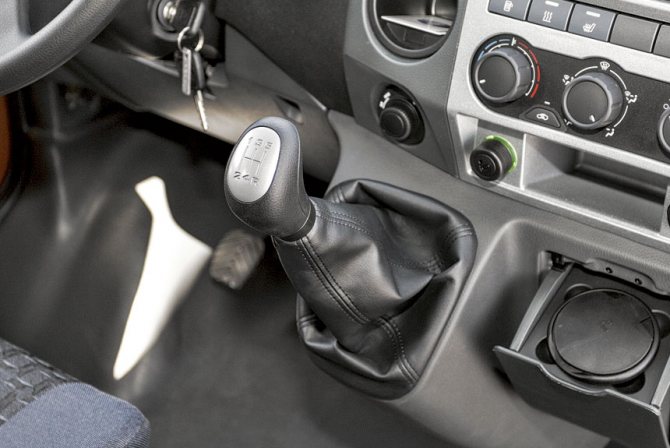
If you carefully remove the cover from the joystick...
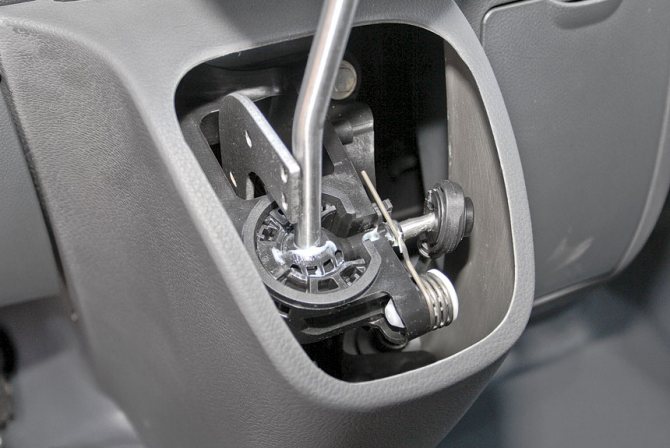
...then the mechanism of the Japanese brand Atsumitec will be visible (it is produced in Togliatti)
0 / 0
And now, finally, you can ride the “all-metal” ones, and they have already found a serial configuration! Under the warm sky of Sochi there is a line of vans and combis, and in their cabins... That’s right, instead of a long lever there is a short joystick on the panel tide. What else is new and unusual here?
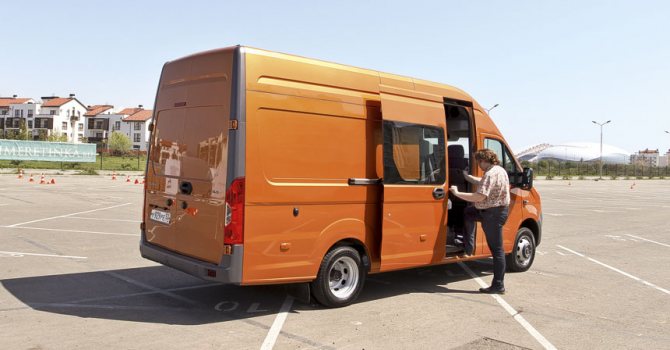
Climbing into the second row in the combi is convenient, but the door could open wider
The usual Chinese-made Cummins 2.8 turbodiesel now develops not 120, but 150 hp. (in addition, a 107-horsepower Evotech gasoline engine will be offered). Since the torque of the turbodiesel has also increased, from 270 to 330 Nm, the gearbox, cardan and rear axle have been strengthened, just like the Next minibuses with a frame-panel body, which we talked about back in AR No. 4, 2020 (which means the designers have already “we practiced on cats”!). The fuel tank, the owners of which complained about its insufficient capacity, was replaced on the van with a larger 80-liter plastic one.

It’s comfortable to sit in the back, there’s a cup holder in each table, and if you fold the backrests...
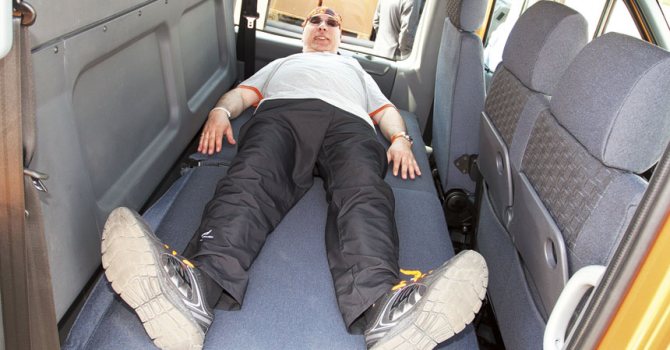
...then you will get a spacious sleeping place
0 / 0
And the frame is reinforced by analogy with the not yet implemented version with a total weight of 4.6 tons. That is, if you count “head-on”, such a frame can easily withstand an overload of more than a ton (shhh, we didn’t say that)!

Niches for small items are voluminous and well located
The suspension has also undergone changes: at the rear there are new springs, the upper mounting points of the Korean Mando shock absorbers have been moved to the frame cross member. The body is fixed to the frame with ten Takata rubber pads - softer than those of the previous Gazelle Business.
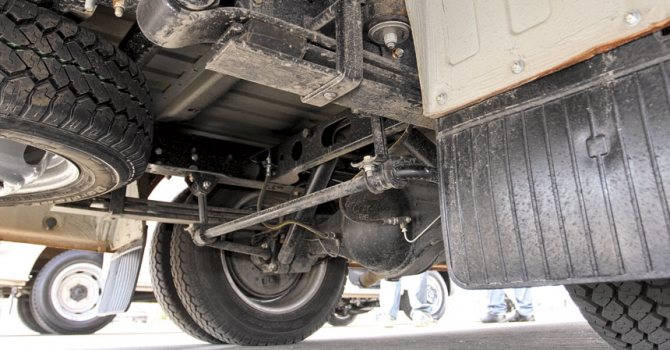
The rear suspension has new springs, and the body is secured to the frame via rubber mounts
Now - about the body itself. The editors have a slide from last year’s gas presentation for dealers, on it there are three options for the Next van: with a cargo compartment volume of 9.5, 11.5 and 13.5 m³. And in the future, there will also be short versions with a total weight of 2.8 tons - a replacement for the current Sobols and Barguzins.
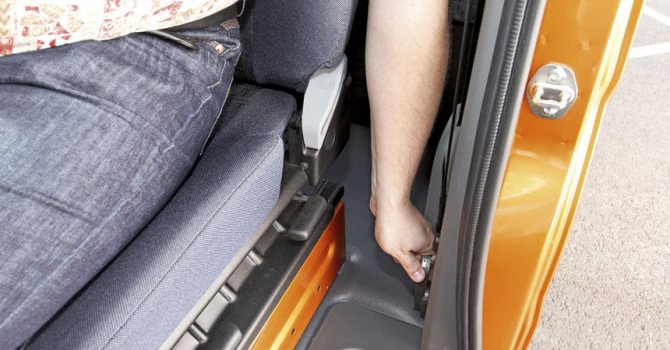
If you pull the lever in the cabin...
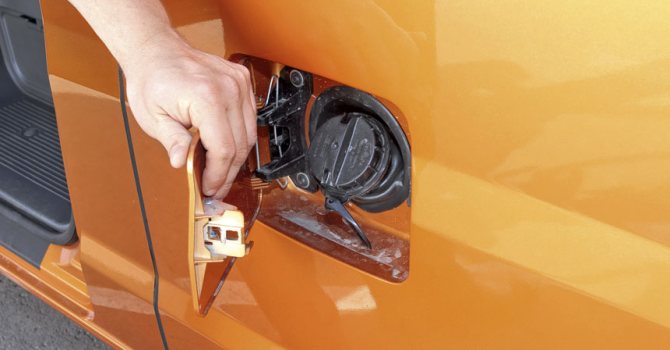
...the fuel tank filler flap will open, the volume of which is 80 liters
0 / 0
But only the largest versions arrived in Sochi: vans themselves and similar combis with two rows of seats. Where are the others? They don’t exist yet, and the reason for this, as they say, is marketing: the Gaza people had to “separate” the new family from the old one. After all, if we now start producing more compact Nexts, few people will buy old Gazelles Business with a cargo compartment volume of 10.5 “cubes”!
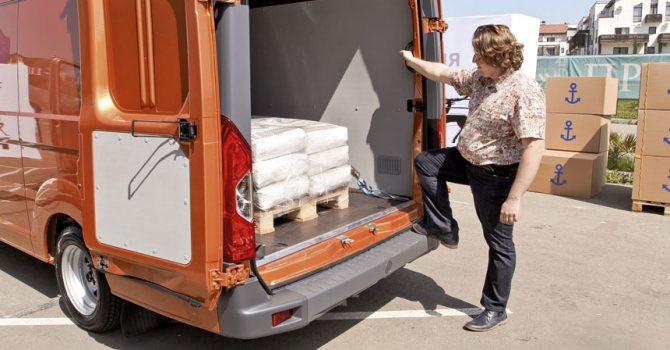
At the back, under the plastic threshold, there is a steel channel, and on the right pillar there is a comfortable handle
By the way, the bodies of both all-metal models, old and new, are cooked in different workshops: the area from Soboley was given over to Next (their bodies are now cooked on the Gazelle Business line). New body panels are produced by GAZ itself - using the same Kuka robots that make the panels of GAZ-made Mercedes Sprinters (remember, the Sprinter Classic is assembled on a conveyor line adjacent to the Gazelles). The Eisenmann paint complex is also the same for Nexts and Sprinters, so, in theory, the bodies should be stamped and painted no worse than those of Mercedes.
From the outside, the appearance of the van is spoiled only by a vertical insert in the sides, surrounded by black sealant around the perimeter. Looks a bit rough! However, the Gazovites promise that over time the sealant will be made lighter. But from behind it is difficult to understand that in front of you are Gazelles: it seems that they are foreign vans of an unknown brand. This impression is reinforced by stylish vertical lights and plastic linings at the corners of the body, protecting against light impacts.
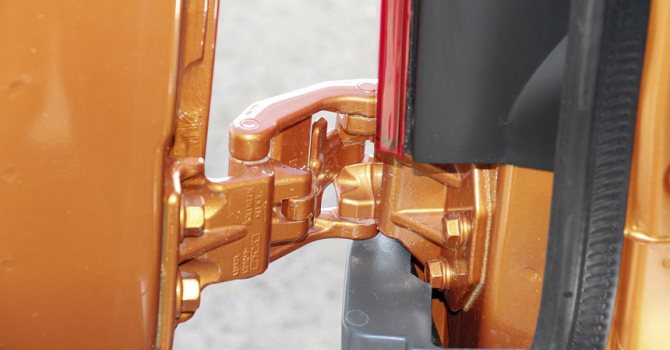
Thanks to composite hinges, doors open 270 degrees...
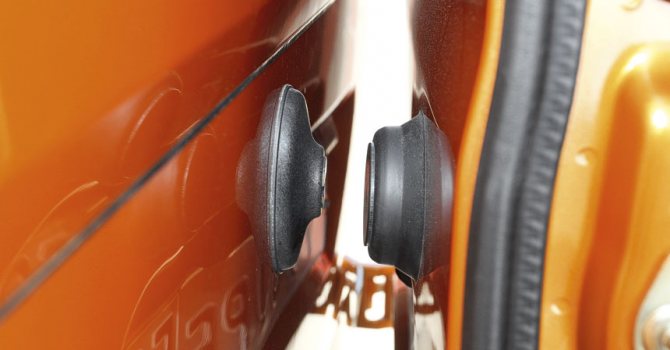
...and are magnetized to the clamps on the body
0 / 0
The rear doors to the cargo compartment are huge and even extend onto the roof, so the opening height is an impressive 1858 mm. The doors themselves open 270 degrees with the ability to be fixed in an intermediate position and are magnetized to the sides - just like Sprinters, but not GAZ, but German, new generation ones.
On the floor of the cargo compartment there is 9 mm thick plywood, on the walls there is plastic sheathing. Both are included as standard equipment, at least at the start of production.
To secure the cargo, there are a dozen rigging loops, and in the front wall there is an opening hatch that allows you to insert even five-meter pipes or boards into the body. Above the cabin there is a shelf for various small things, on the ceiling there are LED lamps... And a creepy-looking mastic at the joints of parts. Of course, people don’t ride in the cargo compartment, but they could have been more careful!
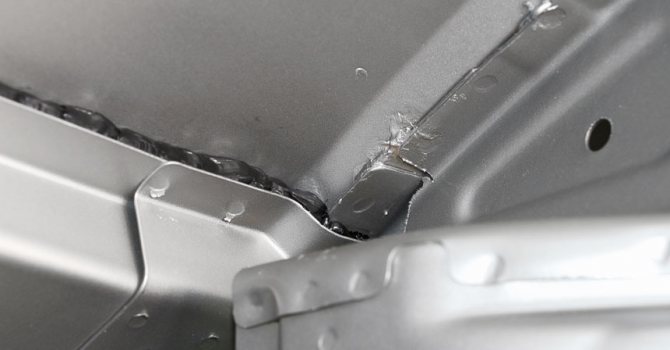
There are traces of mastic at the joints of the panels, and the sealant is laid in waves
In the combi version, this compartment is smaller, but its volume, 9.5 m3, is still pleasing - especially since four people can comfortably fit in the back row of seats. There are folding tables built into the back of the front passenger seat, sockets and a cup holder on the left wall, and convenient niches for small items at the entrance. Moreover, like the Lawn Next with a two-row cabin, the rear seat backs fold out into a wide berth, and there are lockers for luggage under the pillows. So two drivers can go on a long-distance battle in a combi: one will sleep across the front seats, the other in the back. What I didn’t like was that the sliding door has thin edges: it’s difficult to cut yourself on them, but it’s quite possible to hurt yourself.
In addition to the joystick, a new radio has appeared in the cockpit: with a large touch screen, a USB port and a slot for microSD cards. And it will be standard! An additional payment will only be required for the ability to connect a mobile phone via Bluetooth and a rear view camera (both of these options will appear a little later).
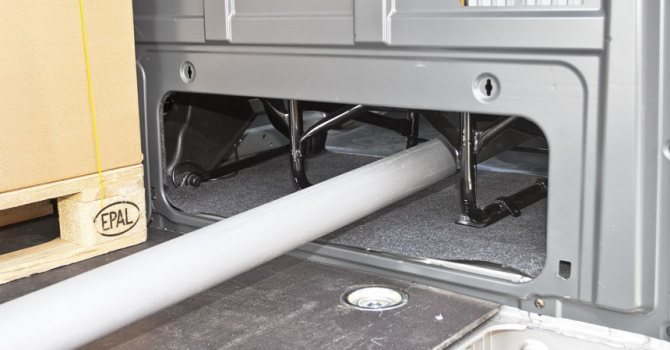
If you open the hatch in the partition, you can transport, for example, long pipes
And finally, about the driving experience: the trip was short, but something can already be said. The new joystick is, of course, convenient - although its movements are large, and the effort when switching is somewhat greater than expected. And yet, it’s nice that you don’t need to move a long “poker”: this is exactly what the Gazelle Next was missing. And now... Something is also missing.
What exactly? Sixth gear! At a speed of 80 km/h, the tachometer already shows 2000 rpm and the rumble of the diesel engine is clearly audible. So, despite good traction and elasticity, there is no desire to accelerate “with your sneaker to the floor.” Alas, a six-speed gearbox is not expected in the near future, but the factory workers promised to think about additional sound insulation of the engine compartment.
In addition, even now the Gazelle Next is quieter than the Sprinter Classic: there is no howling of the transmission, and there is no rattling of the body on bumps in principle - thanks to the frame design.
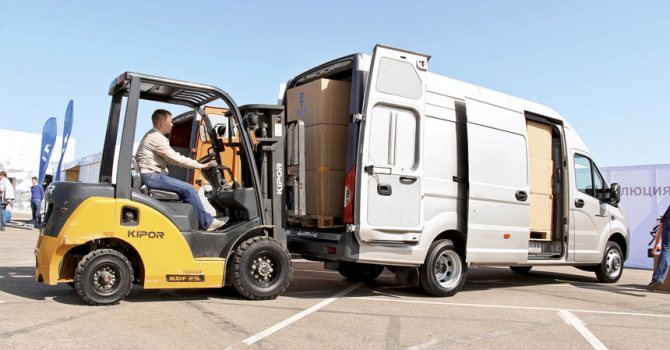
This “shed” can easily fit four Euro pallets
At the same time, the Next steers with dignity: the controls are quite informative, although the steering wheel itself is “long”, from lock to lock - five turns. And there are no problems with visibility: the side mirrors, like those of an on-board vehicle, are large and have “roll-out” zones.
I repeat that our trip through the Olympic Park was short, and at a ragged pace and with constant stops for photography. There are three people in the cabin, 600 kg of ballast in the cargo compartment, plus a working air conditioner. In this mode, the average consumption according to the on-board computer was 13 l/100 km: this is slightly less than the figure we got during a trip on an on-board Gazelle Next with an awning to pick up potatoes in Voronezh (AR No. 20, 2013).

The illustration with the promising range of Next vans was not given to journalists - but we unofficially received it last year

The illustration with the promising range of Next vans was not given to journalists - but we unofficially received it last year

The illustration with the promising range of Next vans was not given to journalists - but we unofficially received it last year
0 / 0
And here’s another thing: the “all-metal” behavior reminded me of the Italian Iveco Daily. It is also based on a spar frame, but is very expensive - while dealers offer a pre-restyling van for about 1.5 million rubles, then with a restyling it costs 2.5 million!
How much do they ask for Next in new versions? Judging by the gas advertising, even less than a million, or rather, from 981 thousand rubles. However, below, as usual, there is a footnote in small print: “Including discounts for lease purchases.”

And the final prices were announced at the presentation in Sochi: a van with an Evotech gasoline engine - from 1 million 90 thousand rubles, with a Cummins turbodiesel - from 1 million 230 thousand, for the combi version you will have to pay an additional 75 thousand rubles. Not so much, considering that the on-board Gazelle Next costs about a million!
The closest in terms of money to the new “all-metal” model are the Fiat Ducato (from 1 million 359 thousand rubles) and its analogues Peugeot Boxer and Citroen Jumper (they are slightly more expensive). However, we are talking about the smallest vans with cargo compartments of 8 m³. The same Ducato with a 13-cc body, like the Gazelle Next, already costs 1 million 700 thousand - and the Sprinter Classic made in Gas is a little cheaper, from 1 million 605 thousand rubles. And we will not be mistaken if we say that after some time the all-metal Next will become the most popular van on our market: sales have already begun.
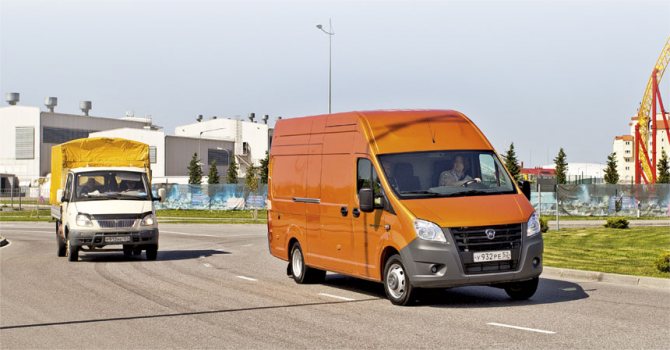
Compared to the old Gazelle, the new van looks stylish and modern
By the way, by the end of the year, the GAZ Group is going to launch another 15 (this is not a typo) products on the market, including a new groove based on Lawn Next - Vector Next. Lawn Next itself and the heavy Ural Next will receive methane versions. The same engine as in the gas-fuelled Urals, YaMZ-536 CNG, will be installed on urban LiAZs - single and accordion.
The Next Gazelles range will include an all-metal van and combi with a body volume of 11.5 m³, a pilot batch of “all-metal” minibuses and a truck with a gas engine based on a gasoline one. Finally, the “old” Sobol model range will expand: the two-cab Farmer (aka Sobol pickup) and the budget CityVan van will go into production.
Well, we will be looking forward to the Sobol Next and Barguzin Next minibuses - I wonder when they will appear?

| Passport details | ||
| Automobile | Gazelle Next | |
| Modification | van | combi |
| Total weight, kg | 3500 | 3500 |
| Curb weight, kg | 2530 | 2650 |
| Number of places | 3 | 7 |
| Cargo compartment volume, m3 | 13,5 | 9,5 |
| Engine | ||
| turbodiesel | Cumins 2.8 | |
| petrol | Evotech | |
| Working volume, l | ||
| turbodiesel | 2,8 | |
| Gasoline engine | 2,69 | |
| Max. power, hp/rpm | ||
| Turbodiesel | 149,6/3400 | |
| Gasoline engine | 106,8/4000 | |
| Max. torque, Nm/rpm | ||
| Turbodiesel | 330/1800-2600 | |
| Gasoline engine | 220,5/2200-2500 | |
| Transmission | Mechanical, 5-speed | |
| Gear ratio ch. transfers | 4,3 | |
| Suspension | ||
| Front | Independent, wishbone with coil springs | |
| Behind | Two longitudinal semi-elliptic springs with additional springs | |
| Brakes front/rear | disc/drum | |
| Fuel tank capacity, l | 80 l | |
| Tires | 185/75R16C | |
| Max. speed, km/h | 130 | |
| Control fuel consumption, l/100 km when driving at constant speed | ||
| 60 km/h | 8,5 | 9,8 |
| 80 km/h | 10,3 | 12,1 |
What's left of the old Gazelle
The new all-metal Gazelle Next van, the photo of which is presented in the article, clearly demonstrates what remains in the Gazelle Next from the previous vehicle model. However, the cargo platform can also be considered new, because even in the basic version, this platform, equipped with steel sides, turned out to be wider compared to the previous generation vehicles.

The new all-metal Gazelle Next van takes its frame structure from the previous Gazelle, but there are also significant differences, for example, insert elements. To create a longer base, they are made of thicker metal, which avoids folding during regular overload (and this is very typical for operation in Russian conditions). We also changed the fastening of the wiring and brake hoses, which was borrowed from foreign manufacturers and is now less susceptible to corrosion.
An experienced driver will also discover many interesting points from below the car:
- updated front independent suspension,
- a more efficient braking system with a service life of thirty to forty thousand kilometers.
When examining the rear suspension, there are no changes - it remained from the previous Gazelle, although it was modernized by installing instead of bushings, hinges for attaching shock absorbers and the presence of aluminum inserts between the springs and suspension.
The operating time of the machine before the first maintenance is 20 thousand km, the manufacturer’s warranty is one hundred and fifty thousand kilometers or three years of operation.
